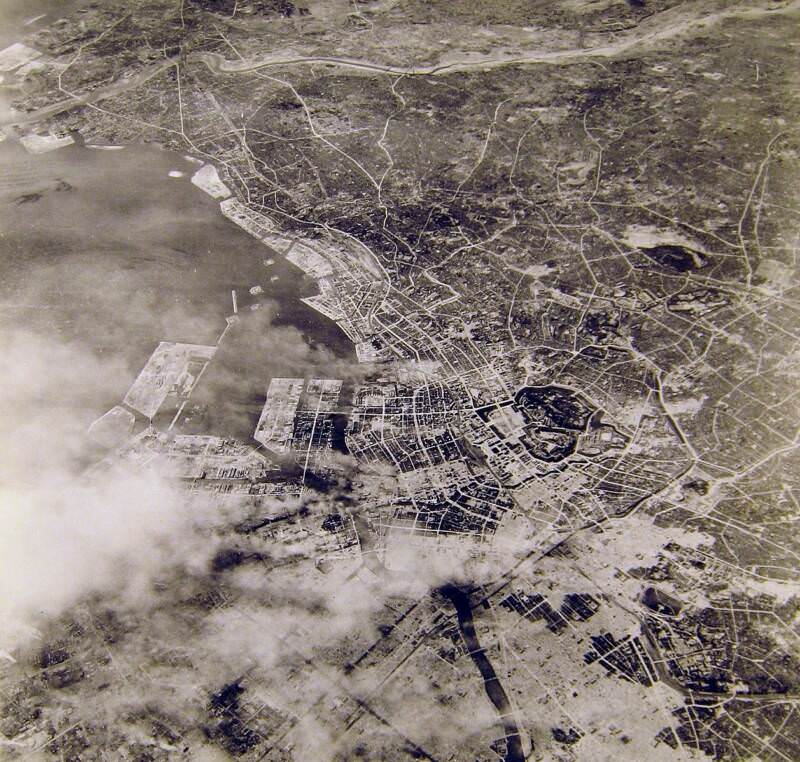On the night of 9–10 March 1945, the U.S. Air Forces conducted the deadliest air raid on Tokyo’s civilians. It was the single most destructive bombing raid in human history. An estimated 100,000 civilians died, and millions were made homeless. This attack was codenamed Operation Meetinghouse by the USAAF and is known as the Great Tokyo Air Raid in Japan. The Japanese air forces failed to defend the city and its citizens; only 14 American aircraft were destroyed.
The U.S. intelligence began assessing the firebombing campaign’s feasibility against Tokyo and other Japanese cities two years before Operation Meetinghouse. The preparations for firebombing raids began before March 1945. Several attacks were conducted to test the effectiveness of firebombing against Japanese cities. The U.S. Air Forces used Boeing B-29 Superfortress, which could fly at over 18,000 feet and drop bombs out of the range of anti-aircraft guns. The planes dropped 500,000 M-69 bombs in total. Clustered into groups of 38, each device weighed six pounds, and each deployed batch spread out during descent. The napalm within each casing spewed flaming liquid upon impact and ignited everything in range. The Tokyo bombing turned 15.8 square miles of the area into debris.
Here are some haunting photographs that show the bombing and aftermath of the attack.















It is unfortunate what humans can do to each other. It is truly tragic.
You should watch Grave of the Fireflies if you haven’t already. I highly recommend it.
In context, the Grave of the fireflies takes place during the firebombing of Kobe. It was considerably more destructive and intense in Tokyo.
In a way, it’s fascinating to see how the various factions of the fascist government did not care about the civilian population.
There wasn’t a civilian population in Japan.
Pearl Harbor was at least a battle between soldiers. But this was just a massacre of civilians.
In war, there are no rules. There are dire consequences for Japan if it doesn’t cooperate with the US.